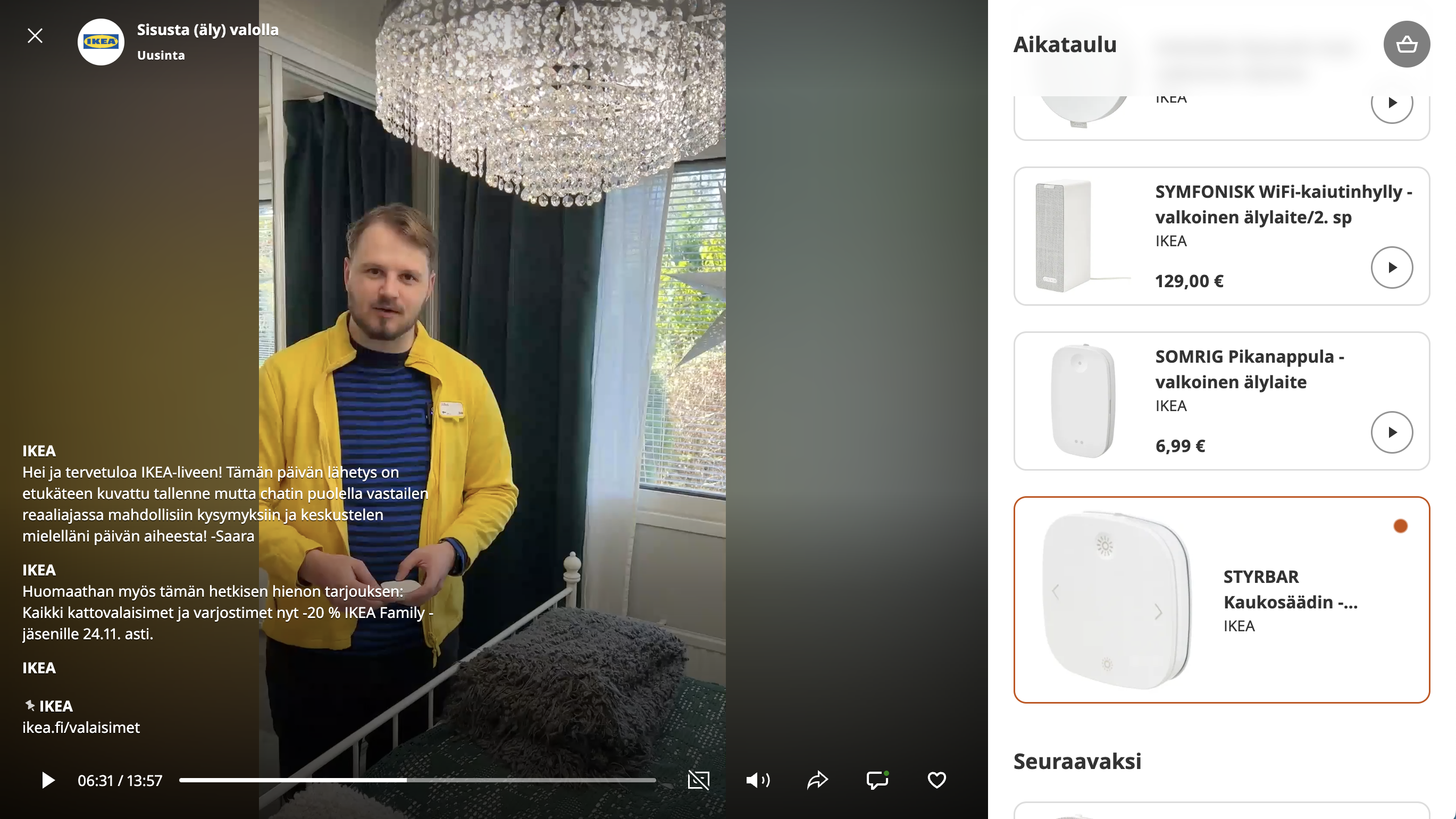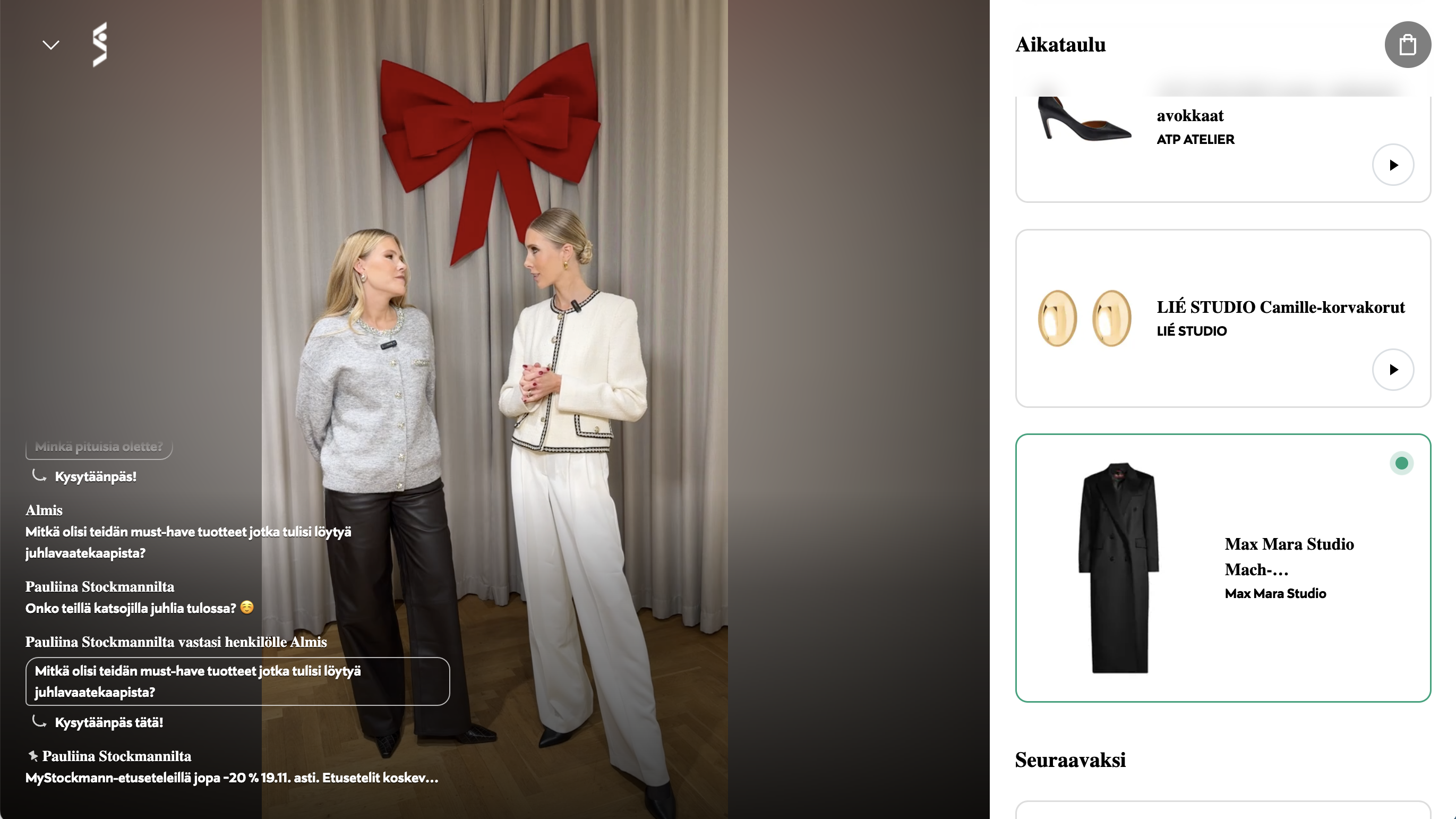HiQ Experts Live Shopping combines nostalgic entertainment with modern digital commerce
Live shopping ties together the best aspects of shopping channels: real-time interaction, entertaining content, and seamless purchasing – all powered by modern technology. How to leverage this growing trend in your business? HiQ’s Head of Digital Commerce, Samu Tapanen, explains.


As a child—before streaming services existed—sick days spent on the couch meant watching either recorded Moomin VHS tapes or the shopping channel. Artificial-looking, bizarre inventions were presented with toothpaste smiles and dollar signs shining in the hosts’ eyes. Perhaps that strange combination was what made it so captivating.
The rapidly growing live shopping phenomenon takes the best elements of traditional shopping channels and packages them for modern audiences using cutting-edge technology. This new form of retail merges real-time interaction, engaging content, and effortless purchasing, creating a unique and immersive shopping experience for consumers.
But what exactly is live shopping? The term refers to a live event where a retailer showcases products or services in an interactive broadcast. Viewers can comment and ask questions via chat, making the experience highly engaging. Live shopping is part of the broader trend of social commerce and is particularly massive in China, where social media influencers promote fashion and beauty products through TikTok Shop.
Thanks to low-code technology, live shopping has now made its way to Finland. Retailers like K-Citymarket and Stockmann are already hosting live broadcasts, and more businesses are eager to try the concept. There are already many tools available for implementing live shopping, with the easiest entry point being the use of social media platforms and integrating products from services like Shopify.


Why bring back a bygone 90s concept?
Live shopping’s greatest strength is interactivity, which significantly influences a customer’s decision-making process when purchasing a product. It’s also an excellent way to cater to customers’ thirst for information—product pages in online stores can be optimized to better match the knowledge level of their audience.
For intangible products such as fitness services, courses, and training programs, showcasing them in live events can provide valuable insights to interested customers. This approach may feel more engaging than simply reading long product descriptions. The interactive format enhances customer experience and boosts sales by allowing customers to see products in action and get real-time answers to their questions.
Additional benefits of live shopping:
- Visibility: A live shopping event increases exposure for your products and brand.
- The Rise of Quality-Based Shopping: Consumers crave more information about products, and the trend of purchasing based on quality is gaining momentum over bargain hunting.
- Higher Conversion Rates: Live shopping events have excellent conversion rates.
- Low Costs: Live shopping doesn’t require massive tech investments—it can be successfully implemented using low-code platforms.
Steps for implementing live shopping in your business
1. Define Your Platform and Target Audience
- Who are you selling to? Identify your target audience and understand their needs and preferences. This helps you select the right products and approach.
- Where is your audience? Choose a platform where your target customers spend the most time. For younger audiences, TikTok or Instagram may work best, while LinkedIn may be better for professional audiences.
- How will you reach them? Use social media ads, email marketing, and influencer collaborations.
2. Plan Your Concept and Structure
- A Clear Plan: Create a structured script or outline of which products to showcase and in what order. This keeps the broadcast smooth and engaging.
- Sense of Urgency: Use limited-time offers and discount codes to encourage quick purchase decisions.
3. Schedule and Promote
- Pre-Marketing: Promote your event as much as possible in advance. Use social media, email lists, and influencer partnerships to maximize reach.
- Relevant Campaigns: Build your event around relevant themes, such as seasonal celebrations (e.g., Christmas, Easter) or special occasions (e.g., Black Friday, Valentine’s Day).
4. Measure and Analyze Data
- Tracking: Monitor viewer numbers, sales, and other key metrics during the broadcast to understand what works and what doesn’t.
- Long-Term Analysis: Assess the long-term impact of live broadcasts on sales. Use this data to refine future campaigns and improve broadcasts.
Live shopping has organically gained traction in the fashion and beauty industry, but it’s still finding its form in other sectors. This means the potential is enormous, making now the perfect time to jump in.

